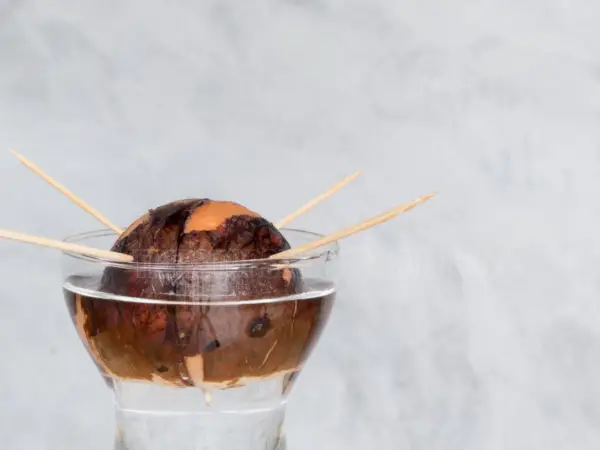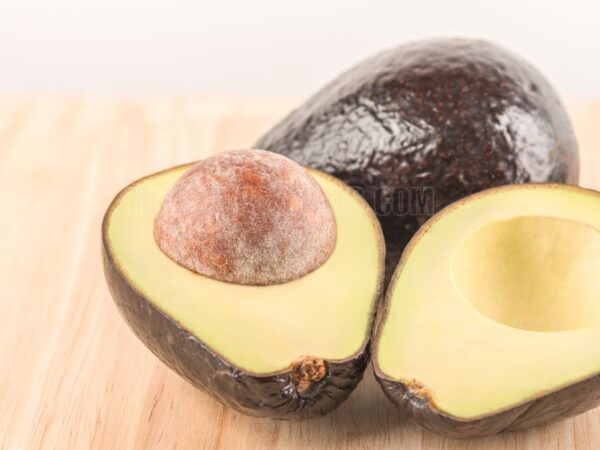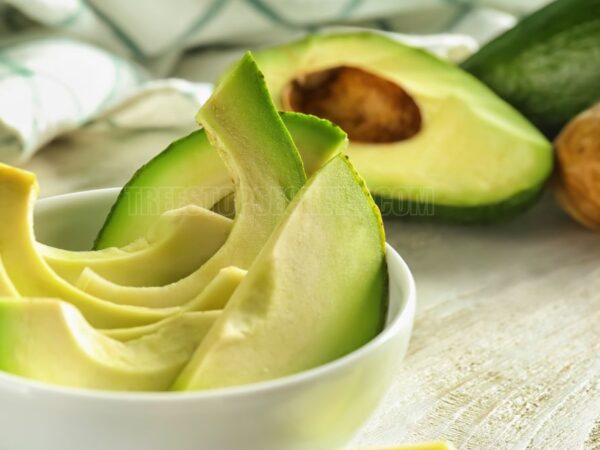Ever wondered why avocados sometimes get stringy? Let's delve into the mystery behind this common occurrence. Avocados, a beloved fruit with a creamy texture, can disappoint when they turn stringy. Understanding the reasons behind this can help you pick the perfect avocado every time. Stay tuned as we uncover the factors that contribute to this perplexing phenomenon and learn how to avoid it in your favorite guacamole or salad.
Key Takeaways
-
Choose Ripe Avocados: Look for quality and season fruit by selecting ripe avocados to reduce stringiness as overripe ones tend to develop this texture.
-
Handle Gently: Be gentle when handling avocados to prevent the formation of stringy texture.
-
Remove Strings Carefully: Use a spoon or knife to scoop out the avocado flesh, avoiding the stringy parts for a smoother experience.
-
Experiment with Recipes: Explore various avocado recipes like guacamole or salads to enjoy avocados beyond the stringy texture.
-
Store Properly: Store avocados correctly to maintain their freshness and reduce the likelihood of them becoming stringy.
-
Quality Check: Inspect avocados before purchase to ensure they are in good condition and less likely to be stringy.
What Makes Avocados Stringy
Growth Conditions
Avocados develop stringiness due to the vascular bundles that run through the fruit, becoming more prominent as the fruit matures. Tree maturity significantly impacts the texture of avocados, leading to increased stringiness as they grow older. Factors such as age and harvesting play a crucial role in determining the overall texture of avocados, affecting their stringiness.
Ripening Process
The ripeness of an avocado greatly influences its stringiness, with overripe fruits being more prone to this texture issue. Seasonality also plays a part in avocado texture, with variations in weather conditions affecting how stringy the fruit becomes. Understanding and maintaining ideal ripening conditions is essential to prevent avocados from becoming excessively stringy.
Varietal Differences
Hass avocados are known to have a higher tendency towards stringiness compared to Stewart avocados. The varieties of avocados available in the market can differ significantly in terms of their texture and stringiness levels. Moreover, horticultural practices, including irrigation methods and fertilization techniques, can impact the stringiness of avocados grown under different conditions.
Safety of Eating Stringy Avocados
Brown Strings and Health
Avocados with brown strings are generally safe to eat, as they do not indicate spoilage or contamination. These strings are often a result of the fruit's natural aging process. To remove them, simply cut around the affected area and discard the stringy parts before consumption. Despite their appearance, avocados with brown strings still offer a plethora of nutritional benefits, such as being rich in healthy fats, fiber, and various vitamins.
Signs of Spoilage
Identifying signs of spoilage in avocados is crucial to avoid consuming potentially harmful fruit. When an avocado is spoiled, its texture becomes mushy and discolored, indicating that it has gone bad. If your avocado exhibits these signs, it's best to discard it immediately. Consuming spoiled avocados can lead to gastrointestinal issues and food poisoning. Therefore, it's essential to be vigilant and avoid eating stringy avocados that show signs of spoilage.
Removing Brown Strings
Preparation Methods
When it comes to preparing stringy avocados, it's essential to choose ripe ones for easier handling. Avocados with firm flesh might be more prone to developing strings. To prevent this, opt for slightly ripe avocados that give in gently when pressed. When preparing these avocados, use a sharp knife to cut them open carefully. By doing this, you can minimize damage to the flesh and reduce the chances of string formation.
Moreover, incorporating acidic ingredients like lemon or lime juice can help slow down the browning process and maintain the avocado's texture. The acidity in these fruits interacts with enzymes in the avocado, preventing excessive browning and potential stringiness. Including these ingredients not only enhances the flavor but also contributes to preserving the avocado's quality.
Simple Removal Techniques
To remove strings from avocados easily, start by using a spoon to scoop out the flesh gently. By scooping along the edges of the avocado skin and avoiding digging too deep, you can separate the flesh cleanly without disturbing any potential strings. After scooping out the flesh, inspect it for any visible strings and gently scrape them off using a knife or spoon.
Proper avocado preparation is crucial in ensuring an enjoyable eating experience without encountering unpleasant textures or flavors. Taking time to remove any visible strings before consuming the avocado can significantly enhance your meal's overall quality. This simple step can make a notable difference in how you perceive and enjoy stringy avocados.
Incorporating diced or mashed avocados into dishes like guacamole, salads, or sandwiches can effectively mask any remaining strings while still benefiting from their creamy texture and nutty flavor. These recipes not only offer a delicious way to enjoy avocados but also provide a versatile option for incorporating this nutritious fruit into various meals.
Enjoying Avocados Beyond the Strings
Nutritional Benefits
Avocados are nutrient powerhouses, packed with vitamins such as C, E, K, and B-6. They also contain healthy fats like monounsaturated fats that are beneficial for heart health. Consuming avocados can help lower bad cholesterol levels and reduce the risk of heart disease. Avocados are a great source of fiber, aiding in digestion and promoting satiety.
One avocado provides around 20 different vitamins and minerals, making it a nutrient-dense fruit. The combination of vitamins, minerals, and healthy fats in avocados contributes to overall well-being. Including avocados in your diet can boost your intake of essential nutrients and support a healthy lifestyle.
Culinary Uses
Stringy avocados can still be utilized in various culinary creations. Mash the avocado to create guacamole or spread it on toast for a delicious snack. The stringiness of the avocado adds an interesting texture to dishes like salads or wraps. Incorporating stringy avocados into smoothies can enhance their creaminess without affecting the taste.
Avocados are incredibly versatile and can be used in both sweet and savory dishes. For a refreshing treat, blend stringy avocados with fruits like mango and banana to make a creamy dessert smoothie. In savory dishes, use diced avocado as a topping for tacos or mix it into pasta for added richness.
When cooking with stringy avocados, consider adding them towards the end of the preparation process to maintain their texture. Their unique consistency makes them ideal for enhancing both the flavor and visual appeal of various dishes.
Final Remarks
Understanding why avocados get stringy helps you enjoy this fruit to the fullest. Being aware of how to handle stringy avocados and safely consume them ensures a pleasant eating experience. By knowing how to remove brown strings and explore various ways to savor avocados, you can make the most of this nutritious and versatile ingredient in your meals.
Next time you encounter stringy avocados, remember these tips to enhance your culinary adventures. Embrace the uniqueness of each avocado and experiment with different recipes to relish its creamy goodness. Stay curious, keep exploring, and make every avocado moment a delightful one!
Frequently Asked Questions
Why do avocados get stringy?
Avocados can become stringy due to overripe or improperly stored fruit. The strings are the result of the breakdown of the avocado's fibers as it ripens, causing a mushy texture.
Is it safe to eat stringy avocados?
Yes, it is safe to eat stringy avocados. While the texture may not be ideal, the avocado is still edible and retains its nutritional value. You can simply remove the strings before consuming if desired.
How can I remove brown strings from avocados?
To remove brown strings from avocados, use a spoon to gently scrape them off the flesh. Alternatively, you can cut around the affected areas and discard them before consuming the rest of the fruit.
What are some ways to enjoy avocados beyond the strings?
You can enjoy avocados in various ways beyond dealing with stringiness by incorporating them into smoothies, salads, sandwiches, or guacamole. Avocado toast, avocado chocolate mousse, or avocado salsa are also popular options.
Can I prevent avocados from becoming stringy?
To prevent avocados from becoming stringy, store them properly by keeping them at room temperature until ripe and then transferring them to the refrigerator. Avoid exposing avocados to extreme temperatures or storing them near ethylene-producing fruits like bananas.
Image Source: Paid image from CANVA




